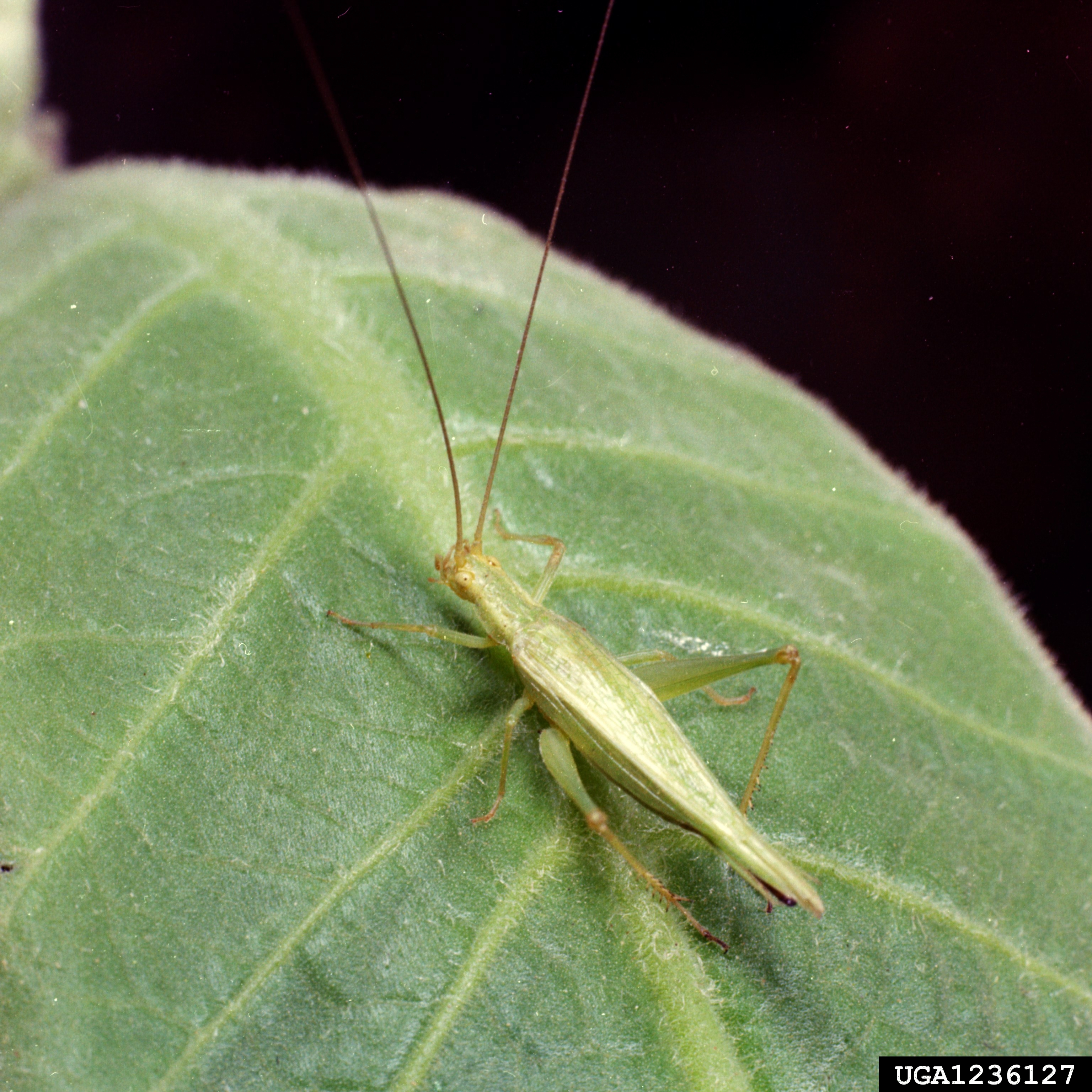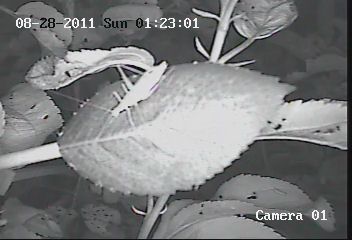Michigan insects in the garden – Week 9: Tree crickets
These predatory crickets are seldom seen in Michigan, but they can be heard all night long.

Tree crickets belong to the insect order Orthoptera, which includes such infamous members as the migratory locust (Locusta migratoria, not present in Michigan), the house cricket (Acheta domestica) and the common bush katydid (subfamily Phanopterinae). The common perception of Orthopterans is that they are herbivores, munching on the foliage of our trees and grasses in the landscape. As scientists learn more about them, it is becoming clear that they are in fact more like opportuni-vores or what are also known as omnivores. They spend most of their time eating plants, but if they come across an insect egg or a defenseless aphid on a plant, they will not hesitate to consume it as well.
Tree crickets (subfamily Oecanthinae) are at the other end of this food-choice spectrum. They primarily eat other insects as food. They are also quite unlike their cousins, the ground crickets (subfamily Nemobiinae), in that they spend most of their time far from the ground, foraging for prey on taller plants, trees and shrubs. Tree crickets help us out in the garden by eating aphids, scale insects and other soft-bodied pests.
Like other crickets, tree crickets “sing” by rubbing their wings together. The singing of tree crickets makes up a large part of the nighttime chorus of our Michigan summers. In fact, one species of tree cricket, the snowy tree cricket (Oecanthus fultoni) often steals the show with its regular, synchronized series of chirps.
The snowy tree cricket is sometimes referred to as the thermometer cricket because their songs can be used to estimate the temperature. The time between chips is longer when the temperature is cooler, and the chirps become more frequent as the temperature warms. This means that you can estimate the outdoor temperature in degrees Fahrenheit by counting the number of snowy tree cricket chirps that you hear in 13 seconds and adding 40.

Tree crickets are omnivores, which means they eat plant material as well as insects. When they feed on plants, they cause minor damage to developing flowers or fruits. Another way tree crickets damage plants is by inserting their eggs into woody stems or twigs. To do this, the female tree cricket excavates a tiny hole with an appendage called an ovipositor, lays an egg in the hole, and then covers the hole back up to seal the egg inside.
Some tree cricket species specialize only on certain plants. The pine tree cricket (Oecanthus pini), for example, only lives on pine trees and only lays its eggs in pine twigs. Most species, however, are more generalist and they will lay eggs in a variety of woody stems or twigs. In Michigan yards and gardens, we are most likely to see this damage on the twigs of fruit trees, grapevines and occasionally on our berry bushes. In some cases, this egglaying or oviposition damage is severe enough to kill the twig, but it is seldom enough to warrant using pesticides to manage them.
Tree crickets are generally considered beneficial because of their habit of eating plant pests like aphids and scale insects. They have even been recorded on video by Michigan State University researchers eating the eggs of an apple pest, the codling moth (Cydia pomonella, see photo below).

You can learn about other beneficial insects and how to reduce pesticide use by exploring the Smart Gardening resources provided by Michigan State University Extension.



 Print
Print Email
Email





